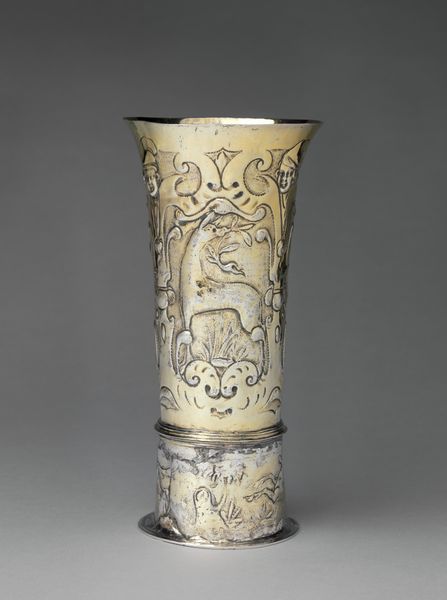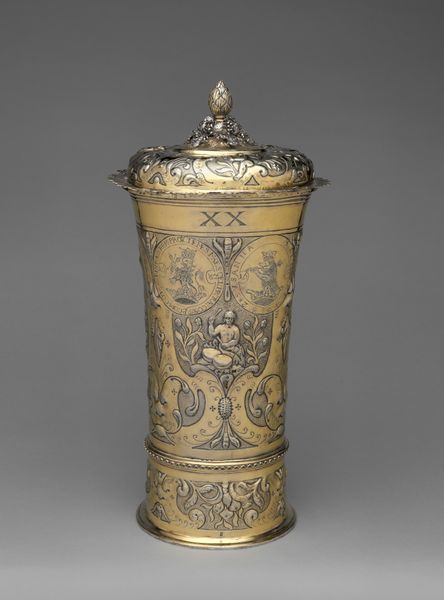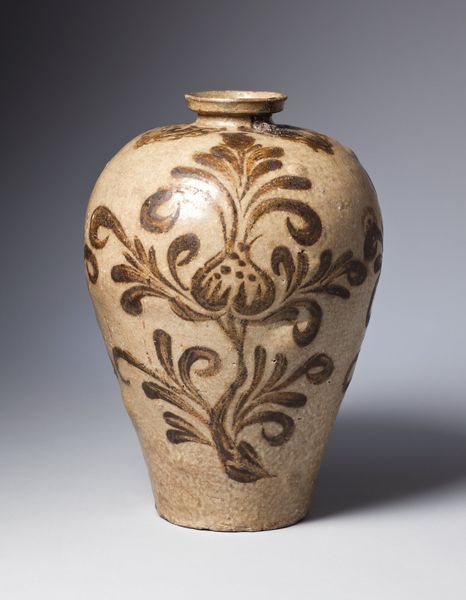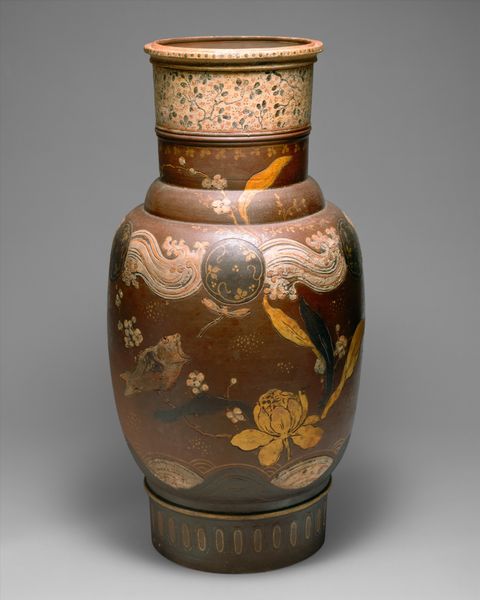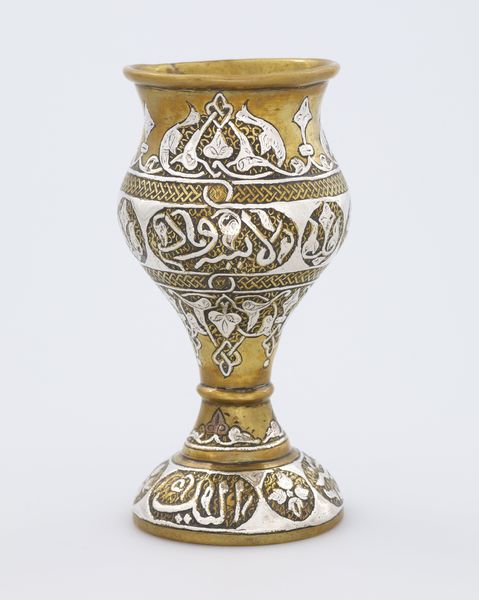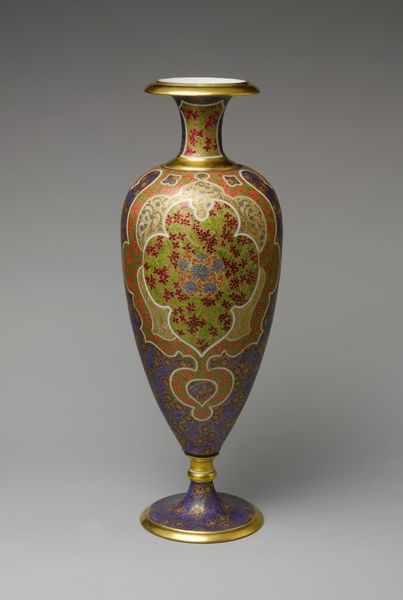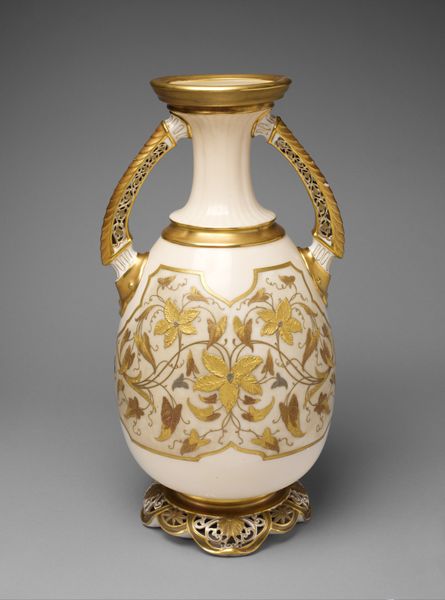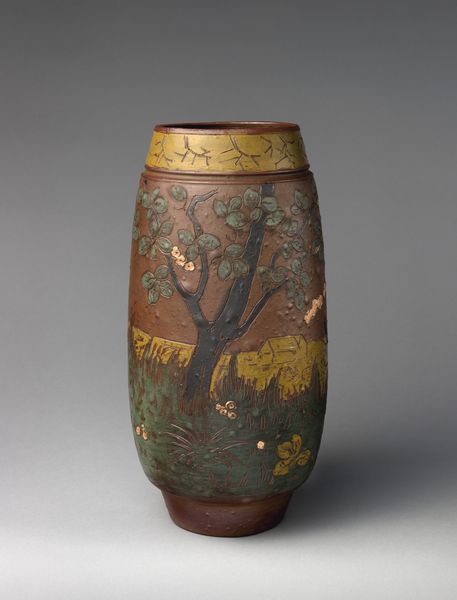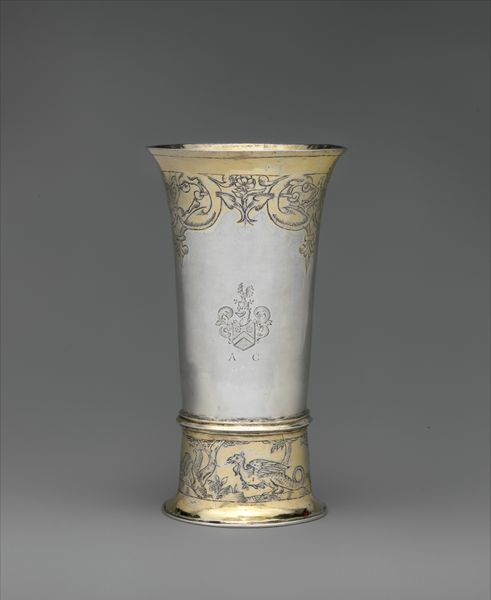
ceramic, bronze, sculpture
#
asian-art
#
ceramic
#
vase
#
bronze
#
stoneware
#
sculpture
#
ceramic
#
china
Dimensions: 4 11/16 x 2 1/8 in. (11.9 x 5.4 cm)
Copyright: Public Domain
Editor: This is a stoneware vase in the shape of a bronze zhi, created by Hu Wenming in the 16th or 17th century. It's intricately decorated with bronze overlays and what appears to be orchids. It strikes me as surprisingly earthy, almost grounded in its visual language. What can you tell me about it? Curator: The deliberate imitation of bronze forms in ceramic reflects a broader cultural conversation about value and authenticity in Ming dynasty China. It prompts a re-evaluation of hierarchies, where ceramic, often deemed less prestigious, adopts the form – and therefore aspires to the perceived status – of bronze. Editor: So, it's not *trying* to be bronze, but playing with the *idea* of it? Curator: Precisely. Consider the artist’s social positioning. Hu Wenming was a craftsman operating within a highly structured system. By recreating the zhi form, typically associated with ritual bronze vessels and elite culture, he potentially challenges rigid social boundaries and celebrates the artistry inherent in more 'common' materials. What about the natural elements, the orchids and stylized plants at the bottom? What message do those forms carry for you? Editor: I guess the botanical forms soften the piece, bringing an element of traditional feminine symbolism into what would otherwise be an intentionally masculine vessel. Curator: I would push a bit further to say they provide context. Throughout its history, the zhi bronze form was revered as the “scholar’s bronze,” an objet d'art symbolic of power that only a select few had access to. Can the overlaying of orchids on its face— a visual commentary, or perhaps even a silent subversion? Editor: That is fascinating. I didn't consider the commentary this work implies regarding class and access! Curator: Exactly. Approaching artworks through a lens of historical and social context can often unlock profound insights. It urges us to consider not just what is depicted, but *who* is depicting it, *why* and in what kind of social climate. Editor: It definitely changed how I see this piece. Now, I see it as so much more than just an elegant vase. Thank you for your thoughts on the work.
Comments
minneapolisinstituteofart about 2 years ago
⋮
The famous metalwork master Hu Wenming (1573–1620)from Songjiang, Jiangsu province (near Shanghai), was one of the most accomplished craftsmen of the late Ming dynasty. He specialized in archaic-style gilt-bronze ritual vessels for the incense stand and scholar’s desk. His work was highly regarded by the educated elite of the wealthy in the Jiangnan region (lower Yangzi delta). This bottle-like vessel derives from a prototype of the Western Zhou bronze wine vessel zhi, but now served a different purpose. The vase, like its Bronze Age prototype, is decorated with designs of lingzhi mushrooms, orchids, and narcissi—all favored motifs of the artists. The vase bears an incised four-character inscription on the bottom, identifying it as work by Hu or, more properly, from his workshop. A complete set of incense vessels comprises only three items: an incense burner, a covered box, and a vase such as this one to hold the small metal tools required for burning the aromatic wood.
Join the conversation
Join millions of artists and users on Artera today and experience the ultimate creative platform.
